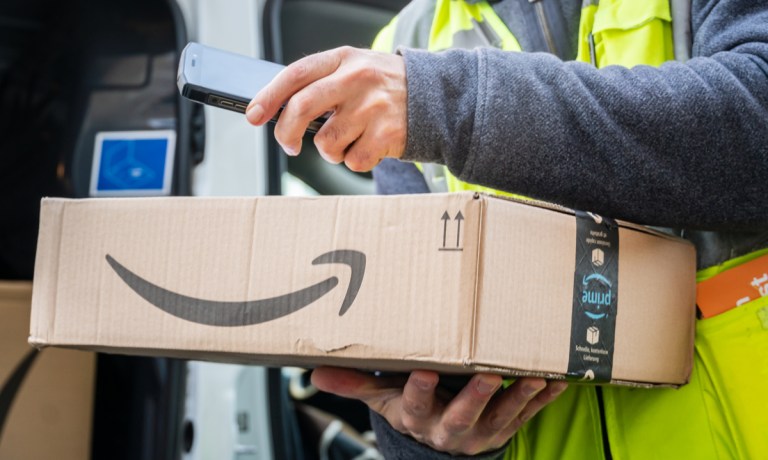
As retail giants Amazon and Walmart compete to be consumers’ go-to for more of their day-to-day needs, the two companies are looking to delivery times as a key factor influencing shopper loyalty.
Amazon, for its part, shared on its Q2 earnings call last week how boosting delivery speeds is increasing consumers’ spending in key consumables categories.
“We delivered our fastest speeds ever so far this year, which helps drive strength in areas like our everyday essentials,” the eCommerce company’s SVP and CFO Brian Olsavsky told analysts. “These include items like nonperishable foods, as well as health, beauty, and personal care items and Prime members continue to increase their shopping frequency while growing their spend on Amazon. Overall unit sales grew 11% year over year.”
CEO Andy Jassy observed that faster delivery, with over 5 billion units arriving same-day or next-day, significantly boosts customer engagement, particularly in these basic needs categories. This efficiency not only supports higher shopping frequencies but also enhances customer loyalty, reinforcing Amazon’s position as a preferred retailer.
Walmart too evidently has its sights set on speed of fulfillment. The company focused on this area in its first annual “Adaptive Retail Report” late last month, highlighting findings that 58% of consumers surveyed were not willing to wait more than a day for grocery delivery and that 22% expect their groceries in 1 to 2 hours.
The inclusion of this finding speaks to Walmart’s efforts to shorten its delivery times and to grow consumers’ adoption of its on-demand delivery channels. Indeed, the company is stepping up its speed of fulfillment around the world.
“Like the U.S., the international team is improving speed of delivery across markets. Same-day delivery orders in India grew by over 150% in the quarter and is now available across 20 major cities,” CEO Doug McMillon told analysts on the company’s last earnings call. “One-hour delivery in China grew to 55 million orders as customers sought convenience during Chinese New Year. And in Chile, 60% of e-commerce orders are delivered same day.”
As it stands, Amazon is in the lead by a considerable margin when it comes to consumers’ retail spending, per data from PYMNTS Intelligence’s Whole Paycheck Report. The study, which looks at each company’s earnings reports as well as data from the e U.S. Census Bureau and Bureau of Economic Analysis, estimated that, at the close of last year, Amazon captured a 10% share of consumers’ total retail spending, while Walmart captured 7.3%.
Overall, consumers expect speedy deliveries. Findings highlighted in the January installment of the PYMNTS Intelligence Real-Time Payments Tracker® revealed that 78% of consumers say that they look for same- or next-day shipping when making a purchase.
As the two major retail companies compete for rapid delivery, Amazon’s aggressive push to enhance delivery speeds has already demonstrated tangible benefits, translating into increased consumer spending and bolstered customer loyalty. Meanwhile, Walmart is not far behind, accelerating its efforts to meet the rising consumer demand for swift and efficient service both domestically and internationally. As both giants vie for the top spot, their success will increasingly hinge on their ability to deliver not just products, but also exceptional speed and convenience. In a landscape where the vast majority of consumers prioritize quick shipping, the future will likely see even greater innovations and competition in the quest to redefine instant gratification.
For all PYMNTS retail coverage, subscribe to the daily Retail Newsletter.